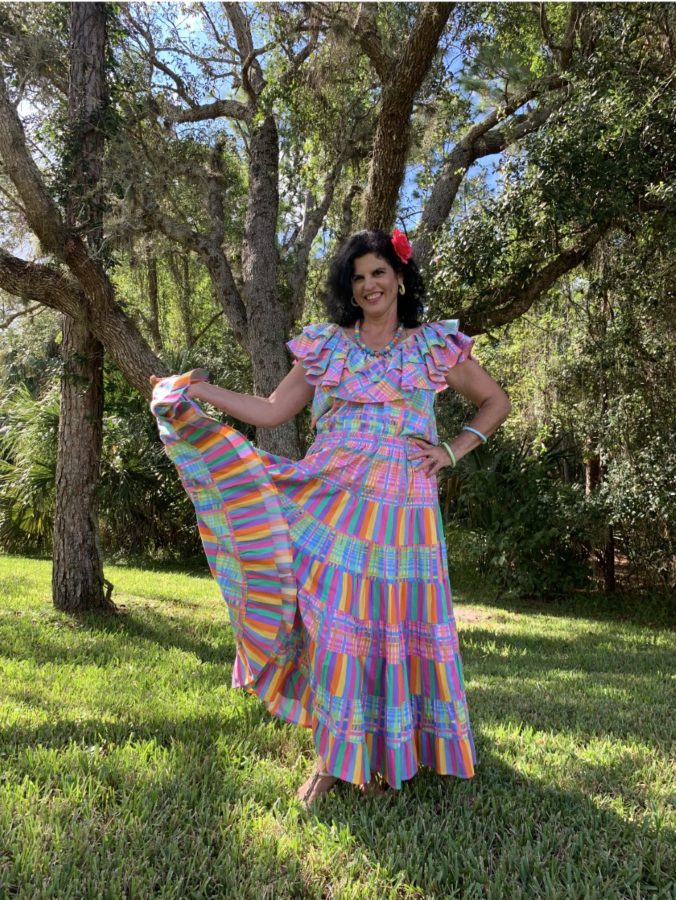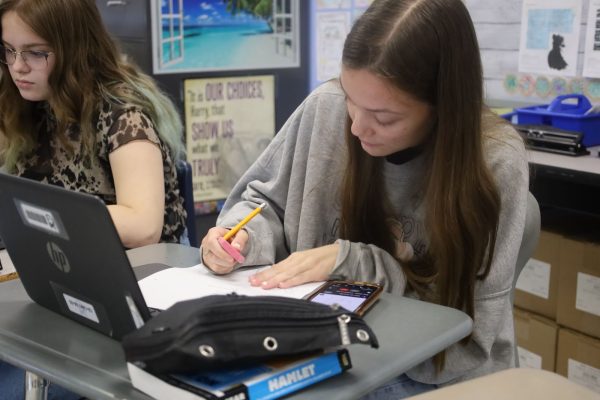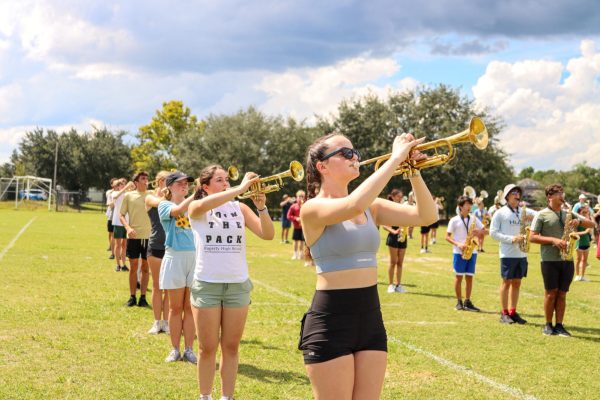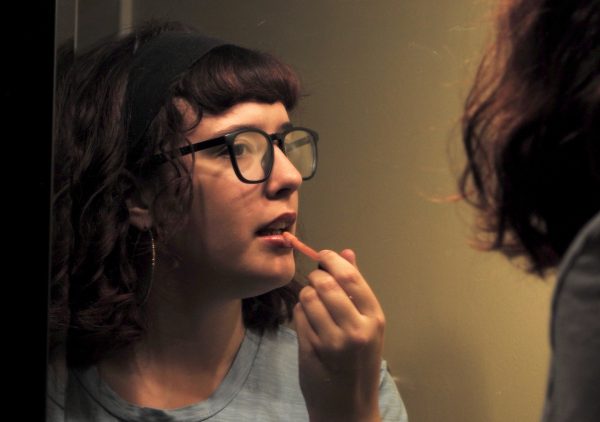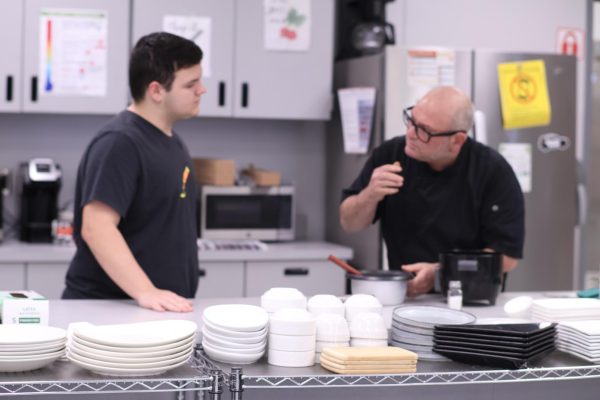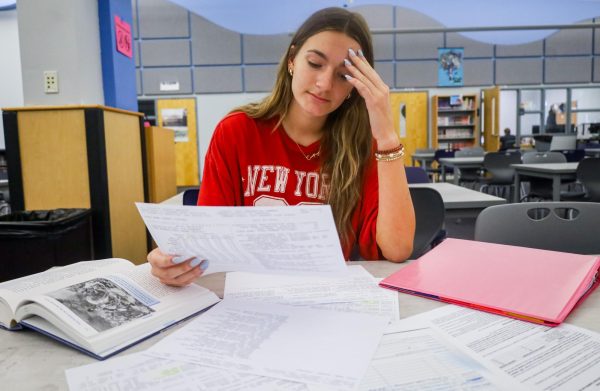Home is where the class is
Teachers born outside of the U.S. find cultural and educational differences in social norms, food, and academic rigor
photo by Zhenzhen Zhang
Chinese and math teacher Zhenzhen Zhang in one of the gardens in Suzhou in 2015. In her Chinese classes, Zhang often discusses her culture with her students, such as Chinese New Year traditions and ways birthdays are celebrated in China.
For many sophomores, 10th grade is just another year of high school, the year before the stress of college admissions and SAT scores. For a young Amany Bekheit, it was the year she discovered her passion for teaching.
In 1990, 16-year-old Bekheit was sitting in a classroom in Cairo, Egypt, fascinated, as her Physics teacher demonstrated how white light could travel through a prism to produce a rainbow.
“I held the prism to the light and saw the rainbow and thought, ‘Oh my God, something is happening here,’” Bekheit said. “Where did the rainbow come from? [My teacher] started explaining and since then, I thought, ‘I want to be a teacher like her.’”
Thirteen years later, this wish became reality. At 29 years old, Bekheit found herself teaching elementary school in New York City after she married and moved to the U.S. with her husband. Later, she would go on to teach physical science in two middle schools before moving to Florida and becoming a high school physics teacher.
However, Bekheit has never forgotten her roots. Born in Luxor, Egypt, Bekheit moved to Cairo shortly after her birth, attending Cairo University and earning a bachelor’s degree in theoretical physics. She always strives to share her culture with her students, whether it’s teaching them how to speak in Arabic or showing them videos of her home country.
From Physics to Geometry to Spanish teachers, instructors from all over the world have brought their experiences outside of the U.S. to their classrooms, providing their students with a variety of perspectives.
Becoming a Teacher
Similarly to Bekheit, math teacher Aglaia Christodoulides, a Cyprus native, moved to America because of her former husband, whom she met in London while pursuing her bachelor’s degree in engineering. After marrying, she moved to Allentown, Pennsylvania and started a family. Although she had initially set out to become a civil engineer, Christodoulides found herself at a teaching job to help support her growing family.
“Teaching came by default. I was like, ‘What can I do that will help me with the family and raising kids?’ Use my knowledge, which was engineering based, and get a job teaching,” Christodoulides said.
By contrast, math and Chinese teacher Zhenzhen Zhang, born in Hengshui, China, knew she wanted to be a teacher ever since she was young.
“In China, being a teacher is a very honorable position. It’s respected by parents, society and students. So I said, ‘Okay, I’ll choose education as a major, since I like it,’” Zhang said.
Cultural differences
Zhang, who taught kindergarten in China, moved to the U.S. after meeting her husband through a student exchange program. However, even after more than 10 years living in the U.S., she still feels like the immigrant she was when she first came here.
“I’m still adjusting even now. I still don’t fully understand the American way of life, of dealing with certain things,” she said.
For example, many of the unspoken rules that govern American society are not present in Chinese society. Especially among family members, personal questions about age, salary and relationship status are not considered disrespectful or off-limits.
“Whenever you go back home and visit your auntie and uncle, they would say to anybody who is still single, ‘How come you’re still not married yet?’ [Americans] don’t do that. Maybe [American] parents would have questions like that, but back in China, your uncle’s second cousin’s auntie would have already grabbed you and asked you personal questions like that,” Zhang said.
Educational differences
When it comes to education, Zhang noted Chinese schools focus more on academics and grades. For American universities, college admissions officers evaluate the student holistically, looking at not only their grades, but their extracurriculars, community service and recommendations.
“[In America], if you get a low score on the SAT but you have other extracurriculars and your whole profile looks good, then you’ll get in. It’s not like that in China,” Zhang said. “In China, you have to meet this line. If you’re under that line, no matter what you do, you’re not going to get admitted.”
Other minor differences included the way math strategies were taught. After spending her entire young adult life in the Chinese education system, Zhang was able to apply this knowledge to her geometry classes.
“I teach [my students] Chinese methods on solving problems and also the American method on solving problems,” Zhang said. “Then they can pick and choose which one works better, and sometimes I open up their eyes.”
Bekheit also found that American schools were more lax in certain aspects. According to her, rules in Egyptian schools were much more strict.
“You have to wear a uniform. No nail polish. You can’t talk loud, you can’t laugh loud. Even when you move in the hallways, you have to keep to the right. You can’t mix and mingle,” Bekheit said.
Speaking Arabic was also prohibited, as it was an English school. Instead of detention or referrals, punishments came in the form of deducting from students’ grades.
The Best of Both Worlds
Despite differences, many still found ways to bridge the gap between their home and the U.S. For Christodoulides, that meant keeping some traditions from Cyprus and adopting others from America.
“[ I realized] there is no right or wrong, but there are different ways of doing things,” Christodoulides said. “Back home, we always have dinner together. So that I kept, but like giving responsibilities I changed. Back home, you baby them until they’re 50 years old. In America, there’s more responsibility given at a young age. So when my kids were in middle school, I was like, ‘You do your own laundry; I’m not doing it.’ It’s like taking the best of everything and just mashing it together.”
These experiences outside of the U.S. not only helped them in their personal lives, but also in their teaching jobs. Especially for foreign language teachers like Zhang and Spanish teacher Nitza Ariza, sharing their culture is part of their curriculum.
“For Hispanic Heritage Month. I dressed up in my folkloric dress and I saw that everybody liked it. It was nice to share my culture,” Ariza said.
Overcoming Obstacles
Ariza was born in Rio Piedras, Puerto Rico, and lived there until 1993, before moving to San Antonio, Texas because of her husband’s military duties.
Even though Puerto Rico is a U.S. territory and Puerto Ricans are U.S. citizens, Ariza still found herself facing challenges because of the language barrier.
“In my very first interview, I was told that I would never find a job because of my accent,” she said. “I left the interview crying, but two years later, I was already in a school working and I got nominated for Teacher of the Year.”
Today, after 23 years of teaching, Ariza can confidently say her experiences in Puerto Rico were not a liability, but an asset.
“It exposes you to a lot of cultures, a lot of people,” she said. “You get to meet awesome people from a lot of different places.”
Christodoulides added that while at first she did not understand certain American customs like sensitivity to religion and nudity, she learned to appreciate the lives she lived in both worlds.
“It gives you a different way of thinking,” Christodoulides said. “It makes you open your eyes and go, ‘Wow, there are other ways of doing things that you never even think about.’”
Your donation will support the student journalists of Hagerty High School. We are an ad-free publication, and your contribution helps us publish six issues of the BluePrint and cover our annual website hosting costs. Thank you so much!



